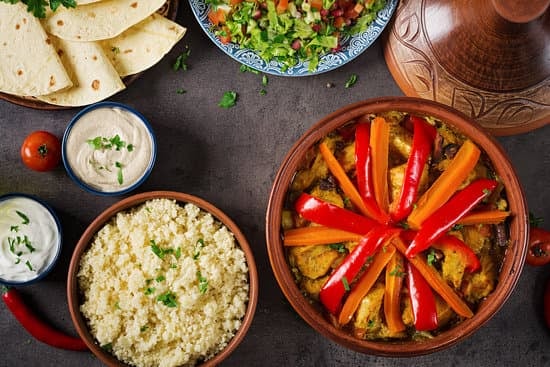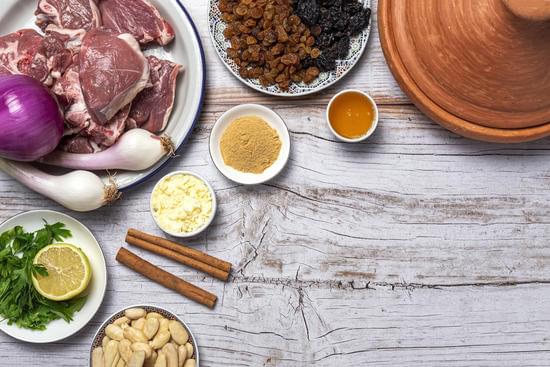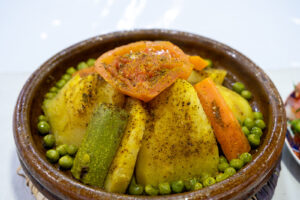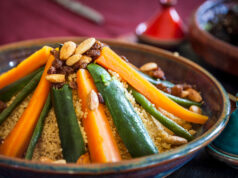The Moroccan Tagine Dish
Moroccan cuisine is one of the most diverse and flavorful in the world, blending influences from Berber, Arab, Andalusian, and Mediterranean cultures. At the heart of this rich culinary tradition is the Moroccan Tagine Dish a slow cooked stew made in a unique clay pot of the same name. How to cook Moroccan tajine is a skill that showcases the essence of this dish. The tagine is more than just a dish; it’s an experience that brings together aromatic spices, tender meats, and vibrant vegetables in a mouthwatering combination.
Whether you’re a home cook looking to try something new or a food enthusiast exploring Moroccan flavors, this guide will take you through the history, traditional recipes, essential spices, and expert tips for mastering the art of Moroccan Tagine cooking.
1. The History of Moroccan Tagine
The word “Tagine” (or Tajine) refers to both the dish and the earthenware pot in which it is cooked. The origins of the tagine date back to the Berber tribes of North Africa, who developed slow-cooking methods to tenderize tough cuts of meat using minimal water in an arid environment.
During the Arab expansion in the 7th century, Persian and Middle Eastern spices were introduced to North Africa, enhancing the flavors of the tagine. Later, the Andalusian influence (from Moorish Spain) introduced dried fruits and nuts, creating the famous sweet and savory tagine variations we see today.

Traditionally, tagines were slow-cooked over charcoal in clay pots, allowing flavors to blend beautifully. Today, they can be cooked on stovetops, ovens, or even in slow cookers, making them accessible to modern kitchens worldwide.
2. Essential Spices and Ingredients for a Moroccan Tagine
Moroccan cuisine is known for its bold yet balanced spice blends. Here are some key ingredients that make a Moroccan tagine stand out:
Essential Spices: Ras el Hanout, a complex Moroccan spice blend with up to 30 ingredients like cardamom, cumin, turmeric, and cinnamon, is a key component in traditional dishes, often accompanied by saffron, which imparts a deep golden hue and luxurious aroma. Cinnamon adds warmth to sweet-and-savory tagines, particularly those with lamb or chicken, while cumin and coriander provide earthiness. Paprika and ginger contribute mild heat and fragrance, creating a rich, layered flavor profile essential to Moroccan cuisine.

Common Ingredients: Traditional Moroccan cuisine offers a rich blend of flavors and textures, combining meat options such as lamb, beef, chicken, or seafood with hearty vegetables like potatoes, carrots, zucchini, and bell peppers. The addition of dried fruits prunes, apricots, raisins, or dates creates a delightful sweet contrast, while almonds and pine nuts contribute richness and crunch. Essential ingredients like preserved lemons, a staple in Moroccan chicken tagine, and briny olives enhance the depth of flavor, making each dish a harmonious balance of savory, sweet, and tangy elements.
Traditional Moroccan Tagine Recipes
A. Classic Lamb Tagine with Prunes and Almonds

Ingredients: To prepare a flavorful Moroccan lamb tagine, sauté 1 kg of lamb chunks (shoulder or leg) with 2 finely chopped onions, 3 minced garlic cloves, and 2 tbsp of olive oil, then season with 1 tsp each of ground ginger, cinnamon, and cumin, along with ½ tsp of saffron, salt, and pepper to taste; simmer slowly, adding ½ cup of prunes (soaked in warm water), ¼ cup of blanched and toasted almonds, and 1 tbsp of honey for a perfect balance of sweetness and spice.
Instructions: To prepare a flavorful lamb tagine, heat olive oil in a tagine or Dutch oven, sauté onions and garlic until soft, then add lamb along with ginger, cinnamon, cumin, saffron, salt, and pepper, browning the meat before pouring in enough water to cover it and allowing it to simmer gently for 1.5–2 hours; in the final 20 minutes, incorporate prunes, honey, and almonds for a touch of sweetness and depth, then serve the aromatic dish hot with fluffy couscous or crusty bread for a hearty and traditional Moroccan meal.
B. Chicken Tagine with Preserved Lemons and Olives

Ingredients: To prepare a flavorful Moroccan chicken tagine, start by heating 2 tablespoons of olive oil in a pan, then add a whole chicken cut into pieces along with 2 sliced onions and 3 minced garlic cloves; season with 1 teaspoon each of ground turmeric, paprika, and cumin, along with ½ teaspoon of saffron for depth of flavor; once the spices are fragrant, pour in 1 cup of chicken broth, add a preserved lemon quartered and ½ cup of green olives for a tangy, briny touch, then let it simmer until the chicken is tender and infused with rich flavors, finally garnishing with fresh cilantro before serving.
Instructions: To prepare a flavorful Moroccan chicken tagine, heat olive oil in a tagine, sauté onions and garlic until fragrant, then add chicken pieces seasoned with a blend of spices such as cumin, paprika, ginger, and cinnamon, browning them on both sides; pour in chicken broth, add preserved lemons for a tangy depth of flavor, cover, and let it simmer for 45–60 minutes until the chicken becomes tender, adding olives in the last 10 minutes for a briny touch, before garnishing with fresh cilantro and serving with traditional Moroccan bread (Khobz) to soak up the rich, aromatic sauce.
C. Vegetarian Tagine with Chickpeas and Vegetables

Ingredients: To prepare a flavorful Moroccan-inspired vegetable stew, heat 2 tablespoons of olive oil in a pot, then sauté 2 minced garlic cloves along with 1 teaspoon of Ras el Hanout, ½ teaspoon of cinnamon, 1 teaspoon of cumin, and ½ teaspoon of smoked paprika until fragrant; add 2 sliced carrots, 1 chopped zucchini, 1 sliced bell pepper, and 2 diced tomatoes, cooking until slightly softened, before stirring in 1 cup of canned chickpeas (drained and rinsed) and 1 cup of vegetable broth, allowing the mixture to simmer until the vegetables are tender and the flavors meld beautifully.
Instructions: Heat olive oil in a tagine over medium heat, sauté garlic and onions until fragrant, then add a mix of vegetables and chickpeas along with cumin, coriander, paprika, and cinnamon; pour in vegetable broth, cover, and let it simmer on low heat for 40–50 minutes until the vegetables are tender and flavors meld together, then serve hot with fluffy couscous or warm flatbread, garnished with fresh herbs and a squeeze of lemon for added brightness.
Cooking Techniques
Before using a new clay tagine, soak it in water for 24 hours, coat it with oil, and heat it gently, then always cook on low heat for slow simmering, layering meat at the bottom, followed by vegetables, and sprinkling spices on top, adding only a small amount of broth or water since tagines retain moisture, and if cooking on a stovetop, be sure to use a heat diffuser to prevent cracking. Additionally, tagines can be used to enhance the flavors of stews, casseroles, and other slow-cooked dishes, so it’s important to adjust seasoning based on the ingredients and ensure the lid fits tightly to trap the steam.
The Moroccan tagine is a timeless dish that captures the essence of Moroccan hospitality, tradition, and flavor. Whether you prefer meaty, seafood, or vegetarian variations, the slow-cooked magic of tagine will bring warmth and depth to your table.
Read more about how to prepare couscous Moroccan



